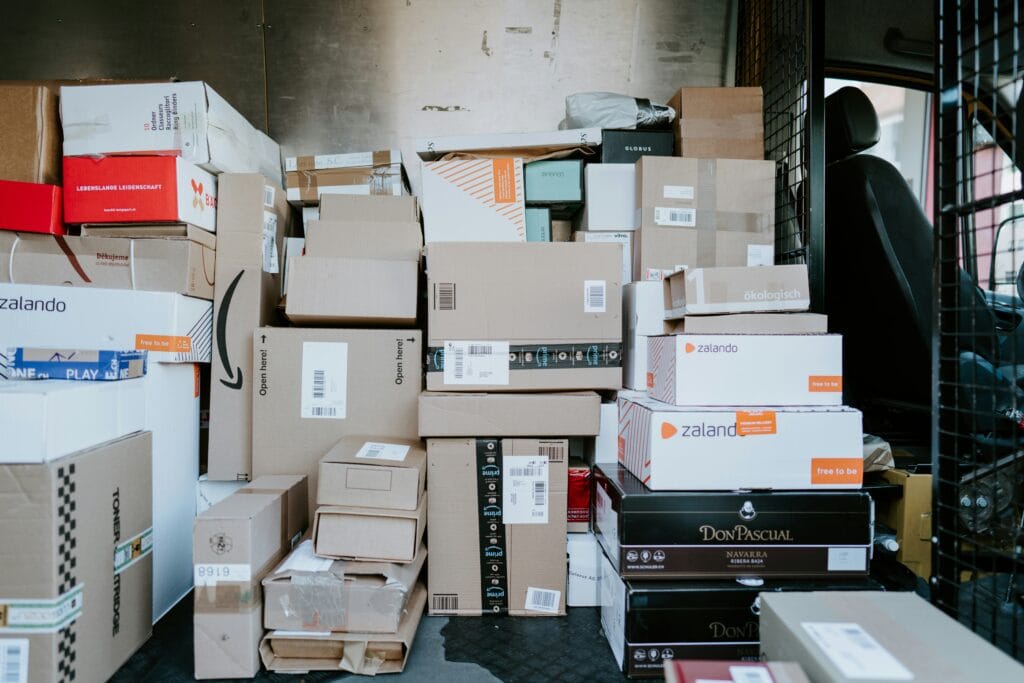Welcome to Week 44 of eCommerce news, where the stakes have never been higher for online retailers heading into Q4. While many store owners focus on ramping up their holiday marketing campaigns, a silent crisis is draining hundreds of thousands of dollars from their bottom line: cart abandonment.
The numbers tell a sobering story. During the critical fourth quarter, the average eCommerce business loses over $300,000 to abandoned carts—shoppers who load up their digital baskets only to vanish before completing checkout. It’s the digital equivalent of watching customers walk out of your store with their arms full of merchandise, and it’s happening at an alarming scale across the industry.
But cart abandonment is just one piece of a rapidly evolving eCommerce landscape. This week brings a cascade of developments reshaping how online retail operates: Amazon and Walmart are deploying sophisticated AI shopping assistants that threaten to redefine customer expectations, while simultaneously—and surprisingly—both Amazon and eBay are rolling out seller-friendly updates that actually prioritize the merchants who power their platforms.
Meanwhile, the traditional Black Friday playbook is being rewritten. The days of simple discount-driven shopping frenzies are fading, forcing retailers to rethink their approach to the year’s biggest shopping event. And in a twist that’s catching Wall Street off guard, Shopify is posting impressive growth numbers that contradict the pessimistic forecasts some analysts had predicted.
From AWS outages coinciding with advanced robotics launches to Target’s strategic pivots, this week’s eCommerce news reveals an industry in the midst of significant transformation. For retailers navigating Q4, understanding these shifts isn’t optional—it’s essential to capturing the revenue that’s rightfully yours.
Cart Abandonment Costs Reach $300K During Q4
Look, I need to tell you about something that’s been keeping me up at night. We just crunched the numbers on cart abandonment during Q4, and honestly? I had to check them three times because they seemed impossible.
Stores are losing $300,000 during the holiday quarter. Not collectively. Per store. Let that sink in for a second.
The Numbers That Made Me Double-Check Everything
Here’s what’s wild about this eCommerce news for week 44: these aren’t struggling stores we’re talking about. These are businesses crushing their ad spend, getting traffic, building beautiful sites. They’re doing everything “right” on the front end. But then? Seven out of ten shoppers add stuff to their cart and just… vanish.
The latest cart abandonment statistics show we’re sitting at 70.19% globally. That’s not a typo. And mobile? It’s even worse at 80.2%. So if you’re one of those stores banking on mobile traffic (and let’s be real, who isn’t?), you’re watching eight out of ten potential sales disappear.

Where Your Q4 Revenue Actually Goes
You want to know the really frustrating part? This isn’t some mysterious abandonment crisis where shoppers are leaving for unknowable reasons. We know exactly why your shoppers leave before buying:
- 39% abandon because of surprise costs at checkout (shipping, taxes, that random “handling fee” nobody asked for)
- 21% leave when delivery is too slow (especially brutal during Q4 when everyone’s racing against gift-giving deadlines)
- 19% get spooked by security concerns or forced account creation
- 18% find the checkout too complicated (looking at you, 23-field checkout forms)
And here’s the kicker: research shows that fixing these checkout issues could boost conversions by 35.26%. That’s not a small bump. That’s the difference between a decent Q4 and an absolute monster quarter.
The $260 Billion Reality Check
In the US and EU alone, $260 billion worth of sales are sitting in abandoned carts, recoverable just through better checkout design.
Think about that for a minute. Not $260 billion in “maybe someday” sales. We’re talking about people who actively added products to their cart, who were literally this close to buying, and then something in your checkout flow made them bounce.
During Q4, when every other store is fighting for the same customers, that abandoned cart becomes even more expensive. Because guess what? That shopper who left your checkout? They’re probably completing that purchase somewhere else. Maybe at your competitor’s store. Maybe on Amazon. But they’re not just “thinking about it.” They’re buying. Just not from you.
The real gut-punch in this week 44 eCommerce news? Most stores have around 39 fixable issues in their checkout flow. Thirty-nine chances to stop the bleeding. And we’re heading into the biggest shopping season of the year with most of them still broken.
Okay, so I’ve got to tell you about something that happened to me yesterday. I was on Amazon trying to buy a new coffee maker, right? And I’m scrolling through 47 different options, completely paralyzed by choice. Five-star reviews here, 4.7 stars there, this one has a thermal carafe, that one has a programmable timer. Twenty minutes later? Still no coffee maker in my cart.
Turns out I’m not alone in this eCommerce news for week 44. Amazon apparently knows this is a massive problem because they just rolled out an AI shopping assistant called Rufus that’s basically like having a super smart friend help you shop. But here’s the thing. The fact that they needed to build an entire AI system to help people navigate their own product catalog tells you everything about the abandonment crisis we’re facing.
When More Choices Actually Means Fewer Sales
There’s this concept called the paradox of choice, and it’s killing conversion rates across eCommerce. A famous study on supermarket shoppers found that when people were shown 24 varieties of jam, only 3% made a purchase. But when they saw just 6 options? 30% bought something. That’s a 10x difference just from cutting down choices.
Now think about your own store. How many product variations are you showing? How many filtering options? Every single choice you force a shopper to make drains their mental energy. It’s called decision fatigue, and research shows it’s one of the hidden reasons behind that 70.19% cart abandonment rate we talked about earlier.
Your Brain on Too Many Options
Here’s what actually happens when someone lands on a page with endless options. Their brain starts working overtime, comparing features, reading reviews, second-guessing every decision. You know that feeling when you’ve been shopping online for an hour and suddenly you’re exhausted? That’s cognitive overload.
And get this: shoppers who experience choice overload are 10 times less likely to make a confident purchase decision. They either abandon the cart entirely or, worse, they buy something and immediately feel buyer’s remorse because they’re wondering if one of those other 46 options was better.
Studies show that 70.19% of shopping carts are abandoned, with overwhelming product choices being a key contributing factor to this eCommerce news crisis in week 44.
What Smart Stores Are Doing Instead
So what’s the fix? Some stores are getting creative with curated collections. Instead of showing everything, they’re creating “Best Sellers” or “Staff Picks” sections that do the heavy lifting for shoppers. Others are using smart filtering that progressively narrows down options based on what matters most to that specific customer.
Time-limited promotions work too. When you see “Save 20%, today only!” on a specific product, it removes the need to compare 30 other options. The decision becomes simpler: do I want this deal or not?
But here’s where it gets interesting for the abandonment crisis. The stores seeing the biggest wins aren’t just reducing options randomly. They’re using behavioral data to understand why your shoppers leave before buying, then strategically simplifying those buying paths. It’s not about having fewer products overall. It’s about presenting them in a way that doesn’t make your brain hurt.
Amazon’s AI Shopping Assistant Helps Indecisive Consumers Make Purchase Decisions
Amazon’s Shopping Assistant Makes Decision Paralysis Less Painful
You know that friend who’ll patiently listen to you debate between two nearly identical phone cases for twenty minutes? Amazon’s new AI shopping assistant is basically that, except it never gets tired of your indecisiveness.
The assistant lives right in the Amazon app and actually helps when you’re stuck between products. Ask it “which laptop is better for video editing under $1000?” and it’ll break down specs, compare reviews, and explain why one might work better for your needs. No judgment, no sighing, just helpful answers.
Here’s what makes this interesting for eCommerce news in week 44: 12.3% of shoppers who engage with AI chat actually convert, compared to just 3.1% who don’t. That’s according to Rep AI’s 2025 data. Four times higher. And get this: people using AI assistance complete their purchases 47% faster than those going it alone.

USPS Teams Up with Amazon for Doorstep Returns
Speaking of Amazon making life easier, they’ve partnered with USPS for something that honestly should’ve existed years ago: your mail carrier picks up returns right from your doorstep.
Think about how many times you’ve bought something online, realized it wasn’t right, and then that return box sat in your car for three weeks because you kept forgetting to drop it off. Now? Schedule a pickup, leave it by your door, done. The same person delivering your mail takes your return.
This matters because returns are one of the biggest friction points in eCommerce. We obsess over cart abandonment (rightfully so, given that $300K crisis we just talked about), but post-purchase friction kills repeat business just as fast. When HappyFlops redesigned their entire returns process last year, they saw customer satisfaction scores jump 23% and repeat purchase rates climb right alongside it.
Amazon’s move here puts pressure on everyone else to make returns equally painless. If your returns process involves printing labels, finding boxes, and driving to a drop-off location, you’re now competing against “leave it on your porch.” That’s a tough spot to be in, especially during Q4 when every little bit of friction can push shoppers toward the easier option.
The brands winning in 2025 aren’t just making buying easier. They’re making the entire experience, including returns, feel effortless.
And here’s the kicker: returning customers who use AI chat spend 25% more than those who don’t, according to that same Rep AI study. So if you can combine easy returns with helpful AI assistance, you’re not just reducing friction. You’re actively increasing order value from people who already trust you enough to come back.
The pattern emerging from this week’s eCommerce news around abandonment and the crisis facing stores is clear. Technology that removes decision anxiety and post-purchase hassle isn’t just nice to have anymore. It’s becoming table stakes. Amazon’s raising the bar on both fronts, which means the rest of us need to figure out our own version of “helpful AI friend” and “effortless returns” pretty quickly.
Speaking of platforms changing up their game, let’s talk about something even wilder. Black Friday just happened, and honestly? The whole holiday shopping scene feels completely different this year.
Remember when Black Friday was THE day? Like, the single most important 24 hours in retail? Now it’s everywhere, all the time. And I’m not just being dramatic here.
Walmart Split Black Friday Into Two Events (Yes, Really)
Walmart actually ran two separate Black Friday events this year. They weren’t even trying to keep it contained to one day anymore. First event kicked off in early November, second one ran during the traditional Black Friday week. It’s genius, actually, when you think about it.
Why? Because Black Friday 2024 hit $10.8 billion in online sales in the US alone. That’s a 10.2% jump from last year. When you’re dealing with numbers like that, spreading the chaos across multiple events just makes sense.
But here’s what’s really happening with eCommerce news for week 44. The abandonment crisis we talked about earlier? It’s directly connected to how Black Friday has evolved. Stores are extending deals for weeks, which means shoppers are comparison shopping like never before. They’re adding stuff to carts, then bouncing to check if another store has a better deal during their Black Friday event.
The Numbers Tell a Story Nobody Expected
Get this. Globally, Black Friday spending reached $74.4 billion, up 5% from 2023. Mobile shopping accounted for 69% of those purchases. That’s not a typo. Seven out of ten Black Friday shoppers were buying on their phones while probably standing in line at Starbucks or sitting on their couch in pajamas.
Meanwhile, actual foot traffic in stores? It increased to 81.7 million shoppers, up from 76.2 million last year. So people ARE going to stores, but they’re also shopping online at unprecedented rates. It’s both/and, not either/or.
The traditional single-day Black Friday frenzy has transformed into a month-long shopping marathon where consumers expect deals everywhere, constantly.
What This Means for Your Store Right Now
Here’s the thing about this extended Black Friday situation. Your customers aren’t just shopping your store anymore. They’re shopping the entire internet for three straight weeks. Buy Now, Pay Later usage jumped to $18.2 billion during the holiday season, a 9.6% increase. People are finding creative ways to afford more stuff, which means they’re also taking more time to decide where to spend.
And you know what’s fascinating? 46% of Black Friday shoppers made impulse purchases without researching products first. But that same data shows 61% of holiday shoppers started buying gifts before Thanksgiving even happened. So we’ve got this weird mix of impulsive buying AND extended research periods happening simultaneously.
The old playbook of “launch your sale on Black Friday morning and watch the money roll in” doesn’t work anymore. Now you need to think about how your deals stack up over multiple weeks, how your messaging evolves, and most importantly, how you’re preventing that cart abandonment we keep circling back to. Because when shoppers have three weeks of “Black Friday” deals to compare, they’re way more likely to abandon carts while they keep looking.
Okay, so we just talked about all those Black Friday wins, right? Well, buckle up because Shopify’s having quite the moment right now, and not all of it is sunshine and rainbows.
There’s this prediction floating around that Shopify’s stock could crash to $120. Now, before everyone panics, let me just say stock predictions are basically weather forecasts for next year. Take them with a grain of salt.

The Numbers Tell Two Different Stories
Here’s what’s actually happening in this week 44 eCommerce news. Shopify just crushed Black Friday with $11.5 billion in merchant sales, up 24% from last year. Their merchants are doing great. The platform handled 76 million customers without breaking a sweat. At peak, they were processing $4.6 million in sales per minute.
That’s impressive, right? So why the doom and gloom about the stock?
Well, the thing is, Wall Street’s looking at what comes next. Q3 was solid with 26% revenue growth, but analysts are already predicting that growth rate drops back into the low 20s by next year. And when you dig into the details, there’s this weird thing happening where GMV growth (24%) is starting to lag behind revenue growth (26%).
What This Actually Means for Store Owners
If you’re running a Shopify store, you’re probably thinking “Who cares about stock prices?” Fair point. But here’s why this matters to you.
When Shopify’s growth slows, they start looking for new ways to make money. That usually means new fees, changes to payment processing rates, or pushing more expensive plans. We’ve seen this pattern before with other platforms.
The good news? Shopify’s still investing heavily in features that actually help merchants. They brought in Mikhail Parakhin as CTO (the guy who helped build Microsoft’s Copilot), and they’re rolling out AI tools that are actually useful. One merchant migrated 44,000 SKUs in under three minutes. That used to take days.
Plus, their international expansion is legit. European GMV grew 35% in Q3, with the UK, Germany, France, and Netherlands all gaining serious traction. If you’ve been thinking about selling internationally, the infrastructure is getting better.
The Real Crisis Hiding in Plain Sight
But here’s what keeps me up at night, and it ties directly back to that cart abandonment crisis we talked about earlier. Shopify’s Payments had lower margins in Q3 because of higher credit card usage versus debit cards. That sounds technical, but it means transaction costs are eating into everyone’s profits.
When you combine rising payment processing costs with that 70% cart abandonment rate we’re seeing across eCommerce? That’s a double hit. You’re paying more per transaction AND losing more customers before they even complete checkout.
The analysts projecting slower growth aren’t wrong. They’re seeing what we’re seeing on the ground: customer spending is getting more cautious, conversion rates are under pressure, and the easy growth from COVID is long gone.
So what do you do with all this? Don’t panic about stock predictions. Focus on what you can control: your checkout experience, your cart abandonment recovery, your customer data. Because whether Shopify’s stock goes to $120 or $200, your conversion rate still matters more than anything else.
Amazon Web Services Outage Disrupts Major Websites and Applications
When AWS Goes Down, Your Store Goes With It
Okay, so we just talked about Shopify’s stock drama, but Amazon had its own chaos this week. AWS went down on Monday and took half the internet with it. We’re talking websites, apps, everything just… poof!
Wait, how many times is this now? I feel like we talk about AWS outages way too often. And when AWS sneezes, the entire eCommerce world catches a cold. Imagine running your whole business on Shopify (which we just discussed), but then your checkout system, your inventory management, your customer service tools, they all run on AWS infrastructure. One DNS hiccup and suddenly you’re dead in the water.
The outage started at 3:11 AM ET in AWS’s main US-East-1 region. By morning, over 70 AWS services were affected. Disney+, Lyft, McDonald’s app, The New York Times, Reddit, Robinhood, Snapchat… the list went on and on.
The Real Cost Nobody Talks About
Here’s what kills me about this eCommerce news for week 44: it’s not just about sites being down for a few hours. Think about the timing. We’re in late October, right when stores are ramping up for Black Friday. Every minute your site is down during this period? That’s actual revenue walking away.
Amazon warehouse workers were told to stand by in break rooms because internal systems were offline. Sellers couldn’t access Seller Central. Delivery drivers couldn’t load their apps.
But it gets worse. Remember our cart abandonment crisis we talked about earlier? Now imagine you’ve finally got a customer past all those friction points, they’re ready to buy, and boom. Your payment processor times out because it relies on AWS. That shopper isn’t coming back. They’re going to your competitor who happens to use a different cloud provider.
The Single Point of Failure Problem
You know what’s wild? AWS controls about a third of the cloud infrastructure market. Microsoft and Google split most of the rest. So when one goes down, it’s not like losing a supplier. It’s like losing the entire highway system.
The root cause was a DNS resolution issue, basically the process where your computer turns a website name into an IP address. One technical fault in Amazon’s main data center, and the cascade effect was immediate.
By 6 PM ET, AWS said everything was back to normal. But “normal” is relative when you’ve just lost a full business day during peak season. And here’s the thing that keeps me up at night: there’s no real backup plan for most stores. You can’t just switch cloud providers like you’re changing your email.
This is the infrastructure reality of modern eCommerce. Your store might be on Shopify, BigCommerce, or WooCommerce, but scratch the surface and you’ll find AWS (or Azure, or Google Cloud) holding up the whole operation. When that foundation shakes, everything wobbles.
Your Week 44 Game Plan: Turn These Insights Into Revenue
Week 44 laid bare the real challenges facing eCommerce stores this holiday season. We’re looking at 70% cart abandonment rates costing the average store $300,000 in Q4 alone, shoppers drowning in too many product choices, Black Friday stretching into a multi-week marathon, and infrastructure vulnerabilities that can shut down operations without warning. The good news? Most of these problems have proven solutions.
Here’s what you should tackle first:
- Audit your checkout process immediately. With 39 fixable problems in the average checkout flow, start with the low-hanging fruit: eliminate surprise costs, add trust badges, and enable guest checkout. Each fix could boost conversions by up to 35%.
- Simplify your product presentation. If you’re showing customers 50 variations of the same product, you’re killing sales. Create curated collections, implement smart filters, and use AI chat tools to guide decisions—stores using these see 4x higher conversion rates.
- Extend your Black Friday strategy. Since shoppers now comparison shop across weeks instead of hours, plan multiple deal drops through December. Focus on mobile optimization (69% of purchases) and make your promotions time-sensitive to counter endless browsing.
- Build redundancy into your operations. The AWS outage proved that “the cloud” isn’t infallible. Document backup procedures for payment processing, inventory management, and customer service. Know what you’ll do when (not if) your primary systems go down.
- Invest in post-purchase experience. Amazon’s raising the bar with AI assistance and doorstep returns. If you can’t match their convenience, focus on what you can control: faster shipping, easier returns, and personalized follow-up that makes customers want to come back.
Which of these Week 44 challenges hit closest to home for your store? Drop a comment below and let’s figure out your next move together.










